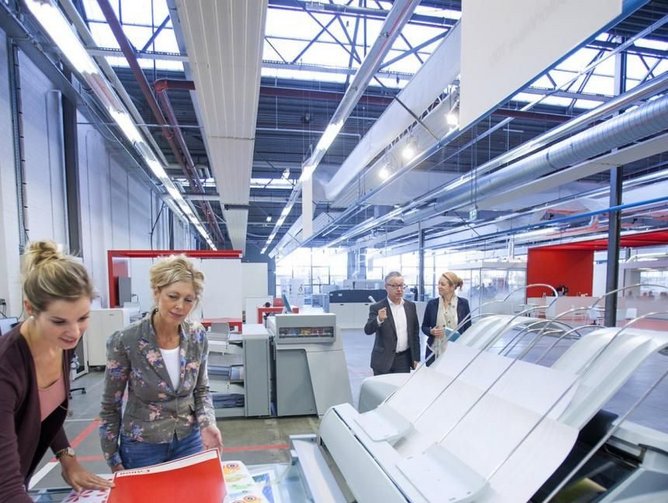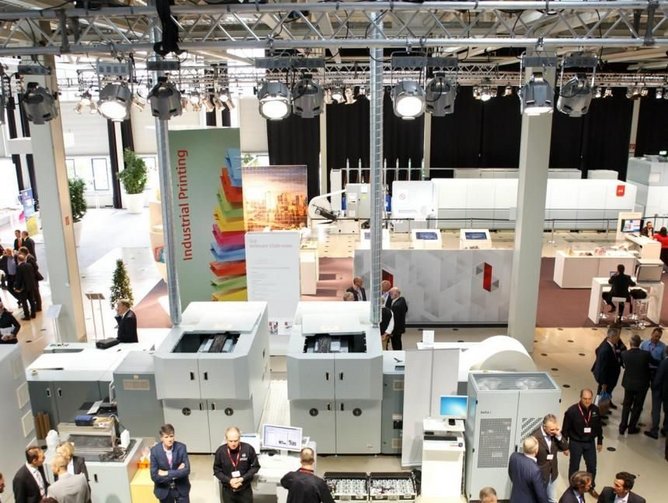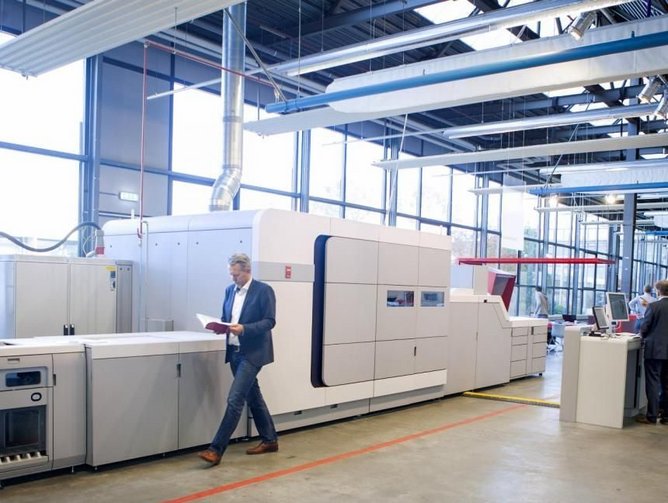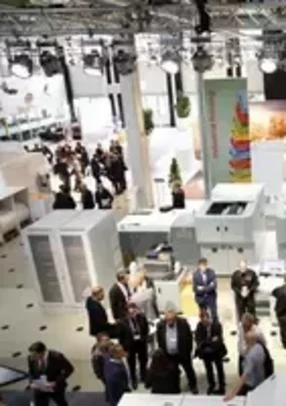Océ was acquired by Canon in 2010 when it became clear that the company’s model of servicing, supplying, and manufacturing document management and printer technologies was set for long term success. Following a number of strategic executive appointments, the company has embarked on a large scale transformation focusing on innovation and driving maximum value from its manufacturing and supply chain processes.
Having maintained a culture of innovation since its foundation in 1877, when founder Lodewijk van der Grinten developed a new colouring agent for margarine, the company is not only keen to utilise the latest technology in its printing products, but across the entirety of its operations.
“The focus has been on consolidating IT and on becoming a truly global company,” says Océ SVP CIO Martin Lohmeier. “The company's focus is on being very innovative and that requires us to have our global operations working seamlessly together, both in terms of R&D as well across our supply chain and manufacturing operations. Our IT landscape is the result of a number of acquisitions we have made over the years and we are now bringing this all together.”
Operations
“We make large printers,” he explains. “We service them and we provide business services on behalf of our customers.” Océ’s remit therefore covers a range of innovative, patented printing technologies, application support and services which enable businesses to compete while delivering value.
Océ’s footprint comprises 3,600 employees spread across eight locations in America, Europe and Asia. The company’s printing technologies cover large format, continuous feed, cutsheet and sheetfed printing, all of which are backed up by Océ’s dedicated business services, with the added option to utilise its tried and tested workflow software solutions.
Much like its parent company Canon, a great deal of Océ’s success can be attributed to its intellectual property. “Our markets are undergoing rapid digitalisation, and our mission is to lead our industry by bringing meaningful innovations to our customers faster than any competitor does. To this end, we have invested in state-of-the-art tools for product design and modeling, thereby allowing us to not only design specific components much faster, but also to truly leverage the potential of our R&D organisation working in virtual teams across the globe.” says Lohmeier.
Operating increasingly on a build-to-order model, the importance of harmonising the company’s manufacturing, procurement and greater supply chain cannot be overstated. In line with its innovative ethos, the company is consolidating a variety of systems into a single, global ERP.
While individual processes have been operating efficiently at a local level, the challenge for Lohmeier and his teams came when the global scale was applied, since many were not designed to work in tandem. He explains: “We want to use our industrial assets in such a way that we can really optimise our capacity utilisation and move from local manufacturing to global so that we can serve the world faster. A lot of the products we are making are built to order, so we need to have a fast response in our supply chain and full utilisation of our industrial footprint.”
“We apply lean principles,” he adds. “We have access to the world leaders in lean manufacturing that are on the Canon payroll in Tokyo, but we also have access to expertise from Japanese car manufacturers who have helped us set up our lean manufacturing. We are pretty much world class when it comes to lean manufacturing.”
Sustainable growth
Alongside the countless efficiencies embedded in its products and services, Océ implements a range of sustainability initiatives across its operations. These activities are all reinforced by Canon Group’s central philosophy to grow while contributing to the prosperity and happiness of all, which also covers a range of talent retention and development strategies.
Lohmeier explains: “Making sure our manufacturing processes are efficient is obviously important for sustainability but also the composition of the inks themselves. We also make sure that we have printer solutions that minimise paper consumption.”
Océ has saved as much as 20 percent of its energy costs in its centralised data centre in Munich by replacing electrical cooling with a bespoke ground water cooling system, and has also utilised the experience of a strategic partner at the facility. Lohmeier says: “NetApp is one of our partners that we use for storage. As you can imagine when you centralise, you have substantial economic scale - NetApp has some nifty technology that helps us to be energy friendly in our storage operations.”
The company’s approach to training and education is similarly multi-faceted. Both employees and affiliated sales people have access to international training centres, 3D guides and online classrooms, as well as a growing number of customer experience centres.
Fully aware that competition for intelligent and innovative engineering graduates is tough, Océ is confident that its roles can deliver fulfilling career paths, with limitless opportunities to develop. “We give employees a great degree of freedom so that they can spend their time on what they think is good for them and us,” he says. The company also retains a great deal of patents and intellectual property, which gives a further incentive for those looking to truly innovate within the business.
Océ has grown to the point that it is central to Canon’s move into the B2B space. The expertise that the printing company has accrued, both in terms of lean manufacturing and operational efficiency, has been vast. Océ is therefore making a substantial effort to expand on its legacy of innovation, while keeping its eyes fixed firmly on the future. The Internet of Things will continue to disrupt every aspect of the modern business, and many will discover that knowing how to deliver value will be mission-critical. Given that this is part of Océ’s DNA, the foresight to develop its manufacturing and supply chain operations will prove to be both profitable and influential for years to come.
Lohmeier adds: “We compete on the total cost of ownership of our solutions - that's a different ball game than just competing on the actual sales price of the printer we eventually sell to the customer. So innovation to us really is of the essence and that is basically transparent for everything we do.”






